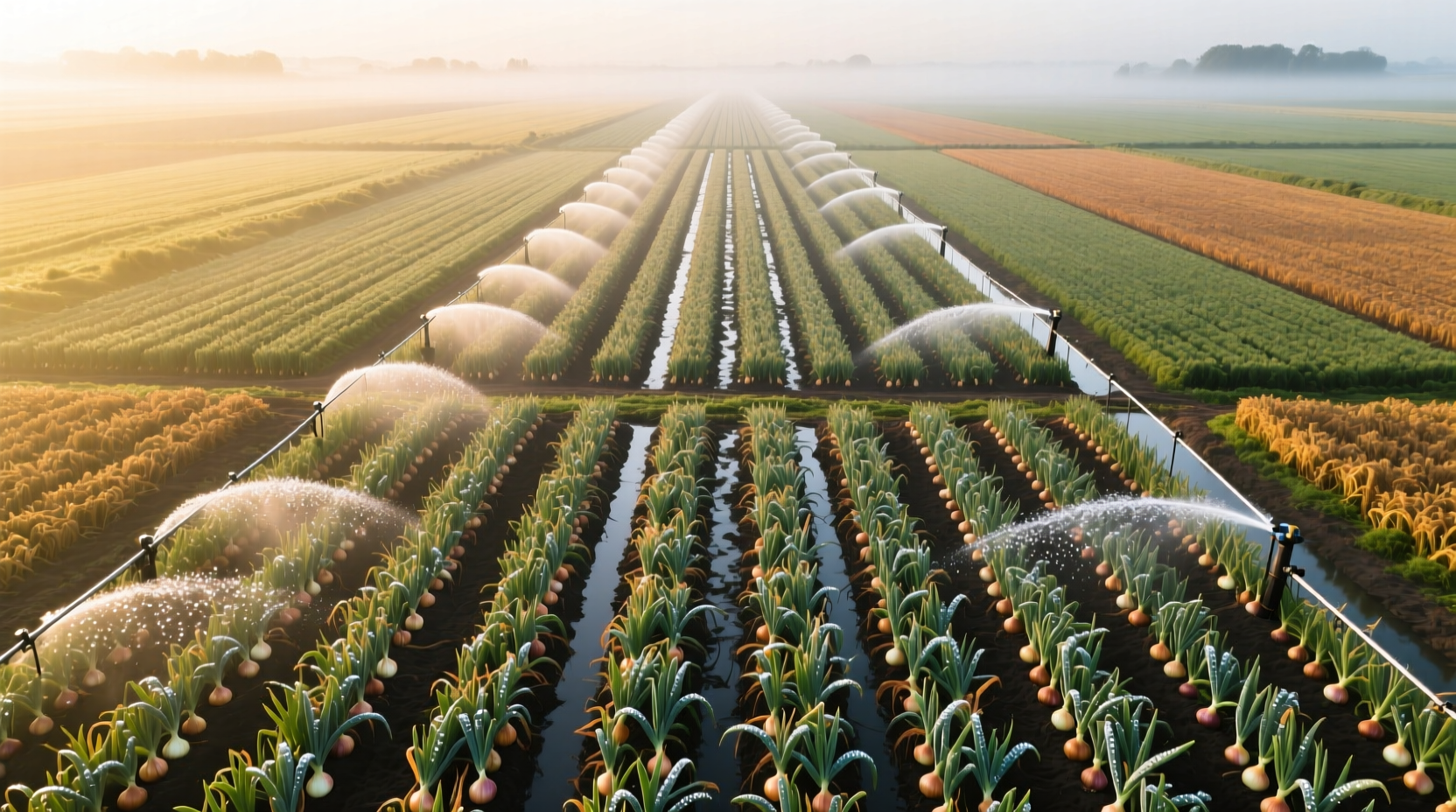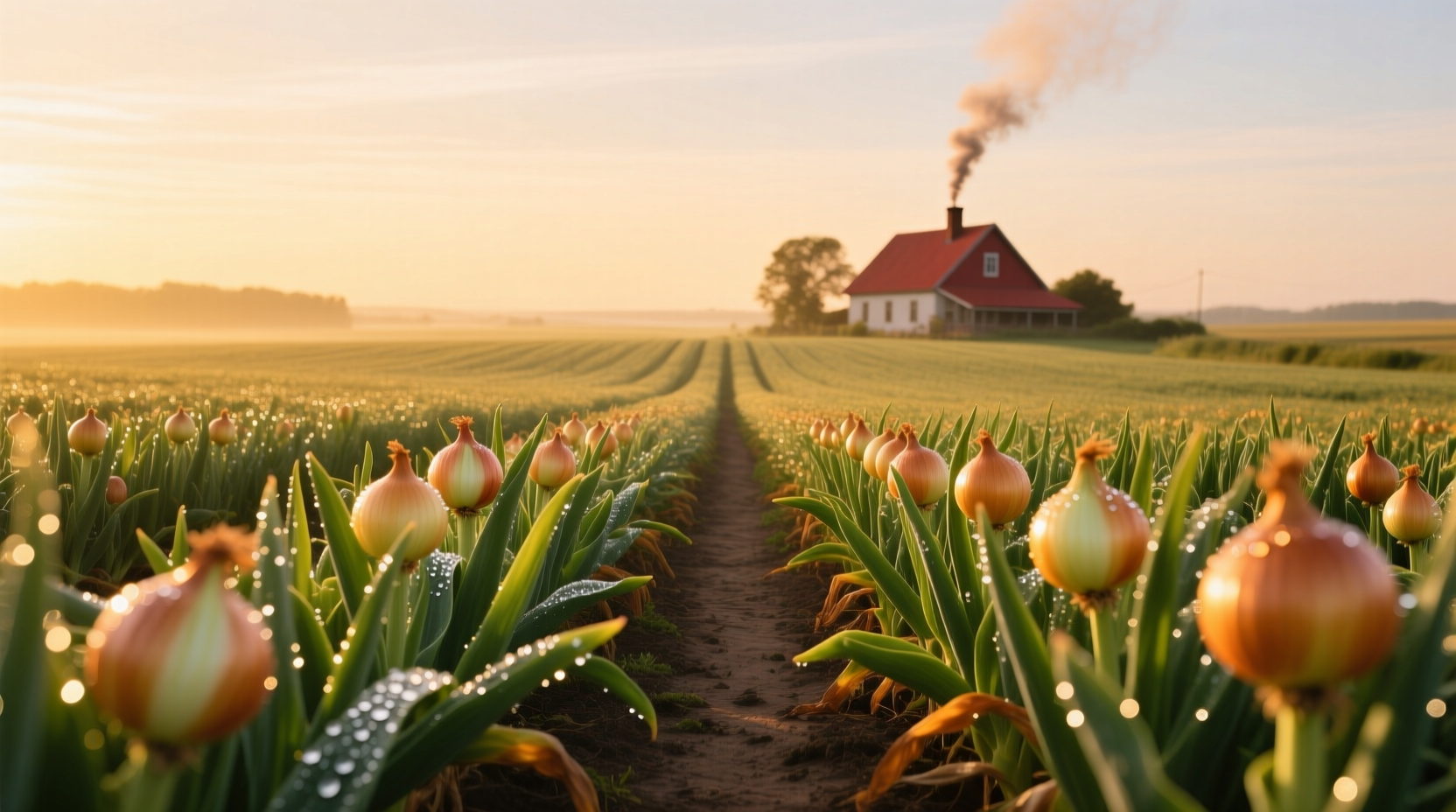Ever wondered how those perfectly uniform onions at your grocery store make their journey from soil to shelf? Understanding commercial onion fields reveals the sophisticated agricultural systems behind one of the world's most widely consumed vegetables. This guide unpacks the science, geography, and practical realities of large-scale onion production that feeds billions worldwide.
Mapping the Global Onion Landscape
Onion cultivation spans every continent except Antarctica, but commercial production concentrates in specific regions where climate, soil, and infrastructure create ideal growing conditions. The top producers dominate global supply chains through strategic farming practices developed over decades of agricultural refinement.
| Country | Annual Production (Million Tons) | Primary Growing Regions | Key Varieties |
|---|---|---|---|
| China | 24.0 | Shandong, Yunnan, Gansu | Red Star, Hysam |
| India | 22.5 | Maharashtra, Karnataka, Bihar | Arka Kalyan, Nasik Red |
| United States | 3.2 | California, Washington, Oregon | Walla Walla, Vidalia, Texas Sweet |
| Egypt | 2.8 | Nile Delta, Beheira | Giza 6, Red Creole |
| Pakistan | 2.3 | Punjab, Sindh | Early Grano, Super Extra |
Source: Food and Agriculture Organization of the United Nations (2023)
From Seed to Harvest: Onion Field Operations
Successful onion farming requires precise timing and specialized knowledge at each growth stage. Commercial growers follow a carefully orchestrated annual cycle:
- Planting (October-January): Direct seeding or transplanting occurs when soil temperatures reach 50°F (10°C), with spacing of 4-6 inches between plants and 12-18 inches between rows
- Vegetative Growth (60-90 days): Critical irrigation management maintains consistent moisture while controlled nitrogen application promotes bulb development
- Bulb Formation (30-45 days): Daylength triggers bulb initiation, requiring precise water reduction to prevent rot while maintaining growth
- Maturation (2-3 weeks): Foliage naturally falls over, signaling harvest readiness when necks soften and outer skins dry
- Harvesting: Mechanical lifters loosen bulbs followed by windrowing for 7-10 days of field curing before collection

Overcoming Onion Farming Challenges
Commercial onion production faces significant hurdles that impact yield and quality. Understanding these limitations helps explain price fluctuations and seasonal availability:
Onion fields require specific soil conditions - sandy loam with pH between 6.0-7.5 provides optimal drainage while retaining sufficient moisture. Heavy clay soils increase rot risk, while pure sand requires frequent irrigation. The University of Minnesota Extension confirms that soil preparation represents 30% of total production costs in commercial operations.
Disease management proves particularly challenging. Pink root, neck rot, and downy mildew can destroy 15-40% of crops without proper rotation and fungicide programs. The American Phytopathological Society reports that Fusarium basal rot alone causes $500 million in annual losses globally.
Sustainable Onion Production Innovations
Modern onion farming increasingly incorporates sustainable practices that maintain soil health while improving efficiency:
- Precision irrigation: Drip systems reduce water usage by 30-50% compared to traditional furrow irrigation while improving bulb uniformity
- Soil health management: 3-4 year crop rotations with non-Allium crops break disease cycles and maintain nutrient balance
- Integrated pest management: Combining beneficial insects, resistant varieties, and targeted pesticide applications reduces chemical usage by 25-40%
- Post-harvest technology: Controlled atmosphere storage extends shelf life from 2-3 months to 8-10 months, reducing food waste
According to USDA Agricultural Research Service trials, implementing these sustainable practices increases net profitability by 12-18% despite slightly higher initial investment costs. The economic viability of sustainable onion farming continues improving as technology costs decrease and consumer demand for responsibly grown produce increases.
Looking Ahead: The Future of Onion Agriculture
Onion field operations continue evolving through technological adoption and climate adaptation strategies. Current research focuses on developing varieties with improved disease resistance and drought tolerance, while precision agriculture tools help optimize resource use. As global demand grows alongside population increases, commercial onion production will remain vital to food security worldwide.











 浙公网安备
33010002000092号
浙公网安备
33010002000092号 浙B2-20120091-4
浙B2-20120091-4